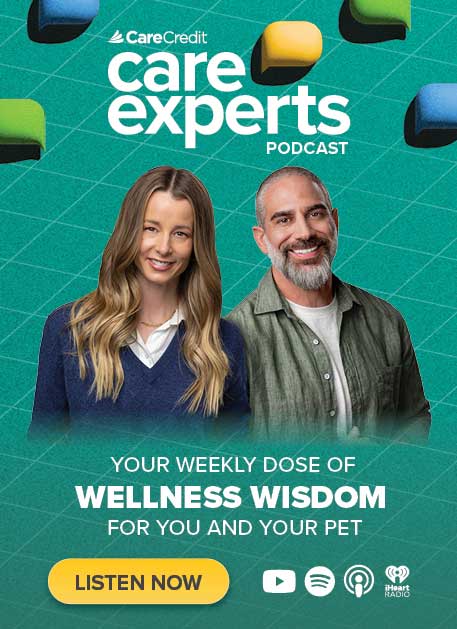During an interview with CareCredit, a board-certified plastic and reconstructive surgeon, Dr. Brian Reagan, discusses tummy tucks and how they can transform the lives of his patients. Here are some of the questions he answers.*
What Is a Tummy Tuck?
Tummy tucks (often included as part of a mommy makeover) are a cosmetic procedure during which extra tissue and skin is removed and the muscles are tightened around the stomach. The result is a more supportive core and a flatter stomach.
Who Is a Good Candidate for a Tummy Tuck?
You may be a good candidate for a tummy tuck if you:
- Have loose or excess skin from significant weight loss
- Have loose skin or muscles after pregnancy
- Are generally healthy and can tolerate anesthesia
What’s the Difference Between Liposuction and a Tummy Tuck?
Liposuction involves removing fat, but nothing is done to the skin. Therefore, liposuction may be a better choice for people who have a little excess fat they want removed.
During a tummy tuck, we remove fat, but we also tighten the skin and the muscles underneath. So a tummy tuck can change the shape of the body, especially for people who have been pregnant.
How Much Does a Tummy Tuck Cost?
Tummy tucks usually cost between $8-10k. Often, this includes some liposuction as well because the goal is to create a 360-degree improvement. So, for example liposuction may be done around the bra line, the back, or the flanks.
What Should You Look for in a Plastic Surgeon?
There are a few key things you should look for in a plastic surgeon:
- Board certification: Are they certified by the American Board of Plastic Surgery, this is a basis of credibility.
- Experience: Do they do a lot of tummy tucks? Look at their websites, read reviews, and check out before and after pictures. More experienced surgeons often have lower complications and better outcomes.
- In-person consultation: Meet with your surgeon to ensure you're on the same page. You want to make sure that you can trust your doctor by ensuring it's a good fit interpersonally. You also want to make sure your goals are aligned, and the best way to ensure that is by talking to your surgeon.
Tummy Tuck Risks
The most significant risk with a tummy tuck is bleeding (hematoma) after the procedure. In some cases, a hematoma can be serious and might require a hospital visit or surgery to correct it.
Preparing for a Tummy Tuck
To prepare for a tummy tuck, tell your doctor about medications and medical history. That way they can do their best to optimize the procedure for your health and needs.
How Is a Tummy Tuck Performed?
Your doctor will create marks on your skin that will guide them during the procedure. Then, an anesthesiologist will give you medication (through an IV) to help you fall asleep.
Once you're sleeping soundly, the surgeon will make an incision low on the tummy. The tummy tuck is performed in several steps, including:
- Thinning out the tissue and removing abdominal fat with liposuction
- Tightening the abdominal wall muscles
- Tacking the tissue down (with progressive tension sutures)
- Creating a natural-looking belly button
- Lipsuctioning the sides
- Closing up the incision to leave a low-placed and symmetric scar (that you can hide in a bikini)
What to Expect During Tummy Tuck Recovery
After a tummy tuck procedure, most patients will be on pain medication for several days, sometimes as few as two days. You'll need to take the most care during the first week, but it is recommended that you still get up and move around (though likely not driving). After about a week, most patients can drive themselves. Six weeks out, most patients have no restrictions at all.
Tummy Tuck Scars
The type of sutures used during the procedure can make a big difference in how a scar forms. Ensuring that tissue is properly tacked down minimizes scar formation. The incision is also taped after the procedure to improve the scar's appearance. Again, scarring should be as minimal as possible and be easily able to remain hidden in a bikini.
Tummy Tuck Follow-up Care
After your tummy tuck, you will regularly visit your surgeon twice a week for the first two weeks and then weekly. Follow-up appointments are essential to ensure that the incision is healing correctly.
CareCredit for Tummy Tucks
Patients love the CareCredit credit card because it can be used to pay over time for many different kinds of cosmetic procedures, including:
- Botox Cosmetic®
- Breast Augmentation
- Laser Hair Removal
- Neck Lift
Financing Options for Tummy Tucks
The CareCredit credit card provides promotional financing that makes it easy to pay for a tummy tuck over time.** CareCredit is like having a separate line of credit for your healthcare needs. It's easy to manage and track what you've spent — and you can use it again for additional procedures.
Once approved for a CareCredit card, you can use it repeatedly (as long as credit is available) for surgical, non-surgical, and minimally invasive cosmetic procedures at providers in the CareCredit network.
CareCredit is a leading national health and wellness credit card that can enable you to get many of the surgeries, procedures, and treatments you want now and pay over time with everyday promotional financing on purchases of $200 or more.**
CareCredit can also be used to pay for copays, coinsurance, deductibles, and your health and wellness needs at providers in the CareCredit network. CareCredit is accepted at hundreds of thousands of locations nationwide to pay for care whenever you need and want it. If you are interested in applying for a CareCredit credit card or would like to find a provider in your area who accepts CareCredit, visit us at www.carecredit.com.
Meet the Experts
Dr. Brian Reagan
Dr. Reagan has more than two decades of experience in private practice. He trained at Cornell Medical College, the New York Hospital, and the University of Texas at South Western in Dallas (the number one rated program in plastic surgery). He was also part of the cast of the Real Housewives of Orange County season 14.
Amy Frena
An on-camera host and tradeshow presenter. She holds a degree in Excercise and Health Science and believes "if you can dream it, you do it."
Author Bio
Kristin Driver
A Digital Writer with CareCredit. She specializes in writing about health care, finances, and pet care. Her work has been published by Cedars-Sinai, UCLA Health, Stanford Health Care, Risk & Insurance, Modern Health Care, Risk Insider, CIO Review, and more.









